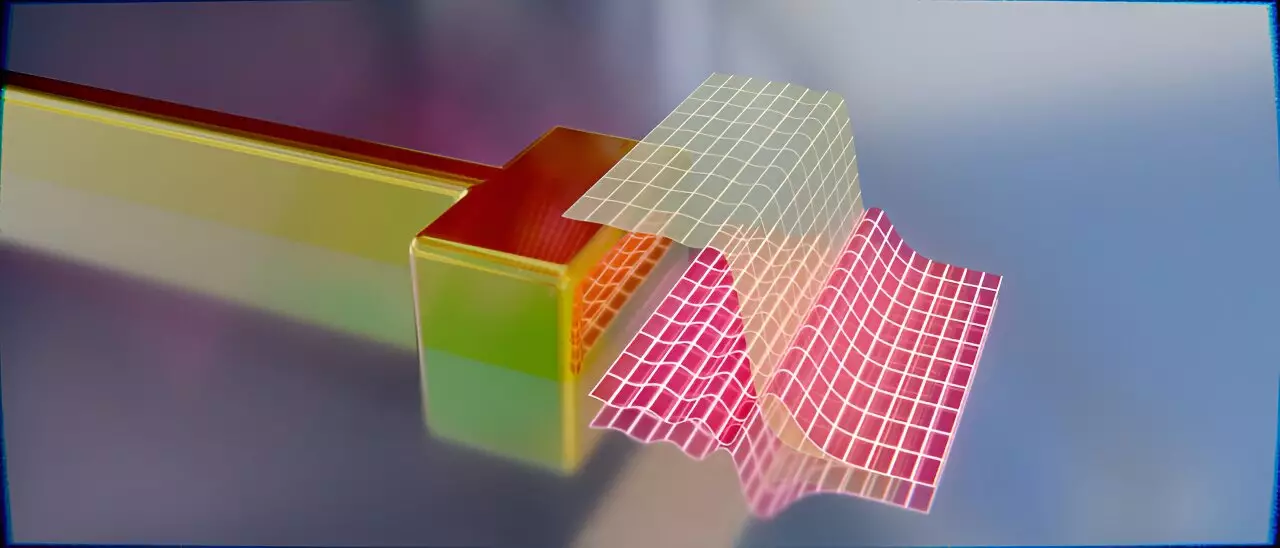As technology relentlessly advances, the demand for faster and more efficient computing systems continues to rise. Today’s conventional computers face a significant barrier in the form of speed limitations inherent to semiconductor technology. Currently, these systems can only operate at frequencies that reach a few gigahertz, translating to a few billion operations per second. This restriction has led computer manufacturers to adopt multi-chip configurations, dispersing computational tasks across several chips to keep pace with performance demands. Unfortunately, this approach falls short of addressing the need for exponentially faster computing, particularly as we approach the physical limits of electronic processing.
To combat these limitations, researchers have eagerly explored alternative methods utilizing light—specifically, photons. It has been theorized that light-based computing could potentially surpass electronic computing by up to 1,000 times in speed. At the forefront of this technological revolution are plasmonic resonators, often referred to as “antennas for light.” These tiny metal structures, on the nanoscale, facilitate interactions between light and electrons, which could theoretically lead to unprecedented advances in computing speed.
Despite the promise that plasmonic resonators hold, significant challenges remain. One of the primary hurdles is their modulation capabilities. In conventional electronics, transistors serve as reliable switches capable of fast on-off states, but researchers have struggled to achieve similar modulation in plasmonic resonators. Dr. Thorsten Feichtner, a physicist at Julius-Maximilians-Universität (JMU) Würzburg in Germany, highlights this critical challenge, stating that without effective modulation, the development of efficient light-based switches becomes hindered.
Recently, however, a research team at JMU, in collaboration with Southern Denmark University (SDU), made notable strides toward addressing this issue. Their efforts culminated in a breakthrough that allows for electrically controlled modulation of these light antennas, setting a course towards ultra-fast active plasmonics. In their findings published in the journal *Science Advances*, the researchers unveiled a novel approach that could redefine the capabilities of computer chips.
The team’s success stemmed from an innovative strategy that emphasizes modifications to the surface properties of individual resonators rather than altering the entire structure. The key breakthrough was the electrical contact made to a single nanorod made of gold. This seemingly straightforward approach relied heavily on advanced nanofabrication methodologies employing helium ion beams and gold nanocrystals, which showcased the power of cutting-edge technology in nanostructure development.
In pursuit of understanding the nuanced behaviors of these nanostructures, sophisticated measurement techniques proved essential. Equipped with a lock-in amplifier, the researchers were able to detect subtle yet significant changes in the resonators’ surface properties—a feat critical to their experimentation. Dr. Feichtner elaborated on the principles at play, likening their findings to a Faraday cage, where electrons accumulate on a surface, influencing the optical characteristics without compromising the integrity of internal structures.
Traditionally, the behavior of optical antennas has been described in classical terms—with metal electrons treated as particles that halt at the boundary of nanoparticles. However, the experimental data gathered by the Würzburg team pointed towards phenomena that cannot be adequately explained through classical physics alone.
The study revealed surprising quantum effects where the electrons ‘smeared’ across the metal-air interface, akin to the gradual transition between a sandy beach and encroaching sea, leading to a softening of the expected resonant behavior. To unlock the implications of these observations, theorists at SDU devised a semi-classical model, which combines quantum mechanics with classical approaches to surface behavior, providing a unified framework for interpreting their findings.
The ability to design new antennas with precision opens up exciting possibilities. Researchers now have the capability to fine-tune specific quantum effects—either amplifying or suppressing them—to maximize efficiency.
Looking Ahead: Transformative Applications
The implications of this research extend far beyond basic computing. The advent of smaller, more efficient resonators has the potential to create high-performance optical modulators suitable for a variety of technological applications. Furthermore, the insights gleaned from the interactions of surface electrons may offer transformative improvements in catalytic processes and enhance our understanding of energy conversion and storage technologies.
As scientists continue to bridge the gap between classical and quantum methods, the possibilities for future technologies grow more expansive. The work being done around plasmonic resonators signifies not just a leap in computational speed, but a fundamental shift in our approach to how information is processed—and, ultimately, how we harness the very nature of light for technological advancement.


Leave a Reply